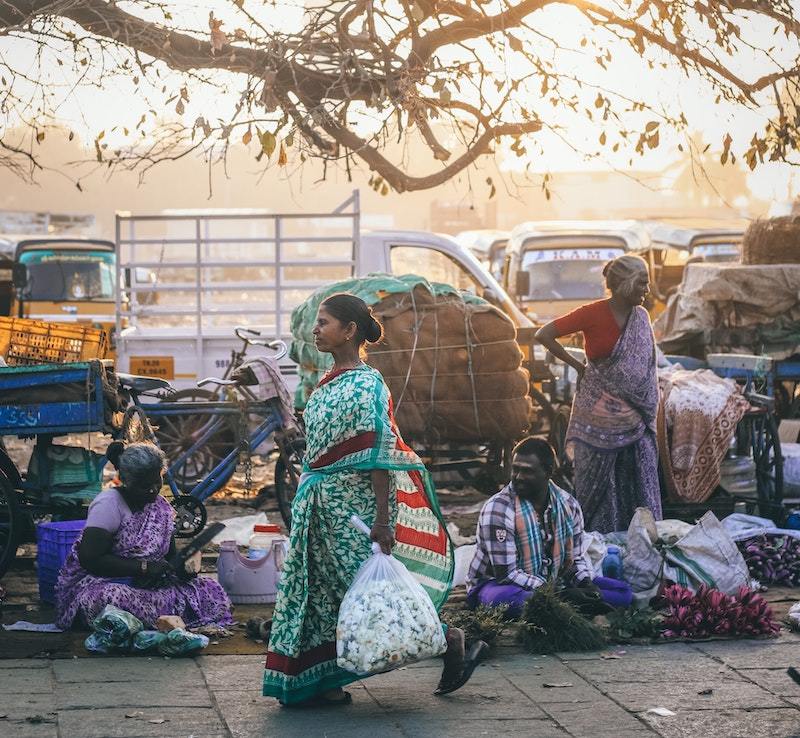How the pandemic disproportionately affects sexually exploited Indians

In late March, all 1.3 billion Indians were ordered to lockdown to help curb the spread of the novel coronavirus. While this order was ostensibly made to save lives, it has meant starvation and deprivation for many, especially India’s migrant workers. Commercially sexually exploited people make a particularly vulnerable part of India’s mammoth migrant workforce. Many commercially sexually exploited people are coerced into this work, and nearly all experience stigmatization, including being ostracized from their families and communities. Despite their disproportionate vulnerability, however, the Indian government has largely ignored commercially sexually exploited people in its response to the coronavirus pandemic.
First and foremost, social distancing is extremely difficult in India, as it’s one of the most densely populated countries in the world, with an average of 460 people living in every square kilometer. As Indian author Arundhati Roy astutely pointed out at an April 23 online teach-in, “In India, there is no social distancing, but physical compression.” Brothels especially offer little room to practice social distancing. Frenetically-overpopulated red light districts such as Sonagachi in Kolkata, GB Road in Delhi, Meergunj in Allahabad, and Kamathipura in Mumbai, make it impossible for commercially sexually exploited people to observe social distancing or engage in proper sanitary practices.
Commercially sexually exploited people are also largely a vulnerable group when it comes to health. In 2017, the National Aids Control Organisation recorded 2.1 million HIV+ people in India, many of whom were in the industry. The diminished immunity of HIV+ people in and of itself makes them more vulnerable to COVID-19, especially those who don’t have the resources to receive antiretroviral therapy (ART) — a widely accepted form of medication to suppress HIV. For those who do receive ART, the lockdown creates physical and financial hurdles for continuing this treatment.
Abortions and childbirth remain essential medical services, but the system has seen to be discriminatory with it too. Recently, a pregnant Muslim woman in Rajasthan lost her baby as she was denied hospital access due to her religion. It’s reasonable to assume that the society that discriminates based on religion would be likely to discriminate against India’s many commercially sexually exploited people in this dire time.
While NGOs such as Apne Aap, National Network of Sex Workers, SANGRAM, Srijan Foundation, and Muskan are doing a praiseworthy job of providing medical and food assistance to this population, there is a lot more that the Indian government needs to do. Since the unregulated nature of the sex industry prevents people in it from listing their domicile on legal documents, most of them live without ration cards—that provide low income households subsidised or free food grains. For instance, in the state of Andhra Pradesh, almost 50% of commercially sexually exploited people live without ration cards. As recommended by Amartya Sen, Raghuram Rajan, and Abhijeet Banerjee, the government must issue six-month temporary ration cards that would ensure that no one in India is denied steady access to food.
In one of his recent addresses to the nation, Prime Minister Modi pleaded with the public to be generous with their employees and to continue to pay them, but what about the self-employed workforce in India? Where will their economic aid and financial security come from? For the many commercially sexually exploited people who don’t have bank accounts, how will relief-cash transfers from the 20 lakh crore rupees (20 trillion rupees) economic package, as announced by the Prime Minister on May 14, take place?
Needless to say, plenty of people, no matter their vocations, are experiencing panic and poverty during this pandemic. But with little savings, underlying health hazards, and little food or sanitary aid, the marginalization of India’s commercially sexually exploited workers due to the pandemic comes as another vicissitude in their already tumultuous life. As usual, commercially sexually exploited people remain at the fringes, perpetually marginalized — their comfort and dignity being compromised, yet again.
More articles by Category: International
More articles by Tag: Asia, Sexualized violence, Women of color, COVID-19


























